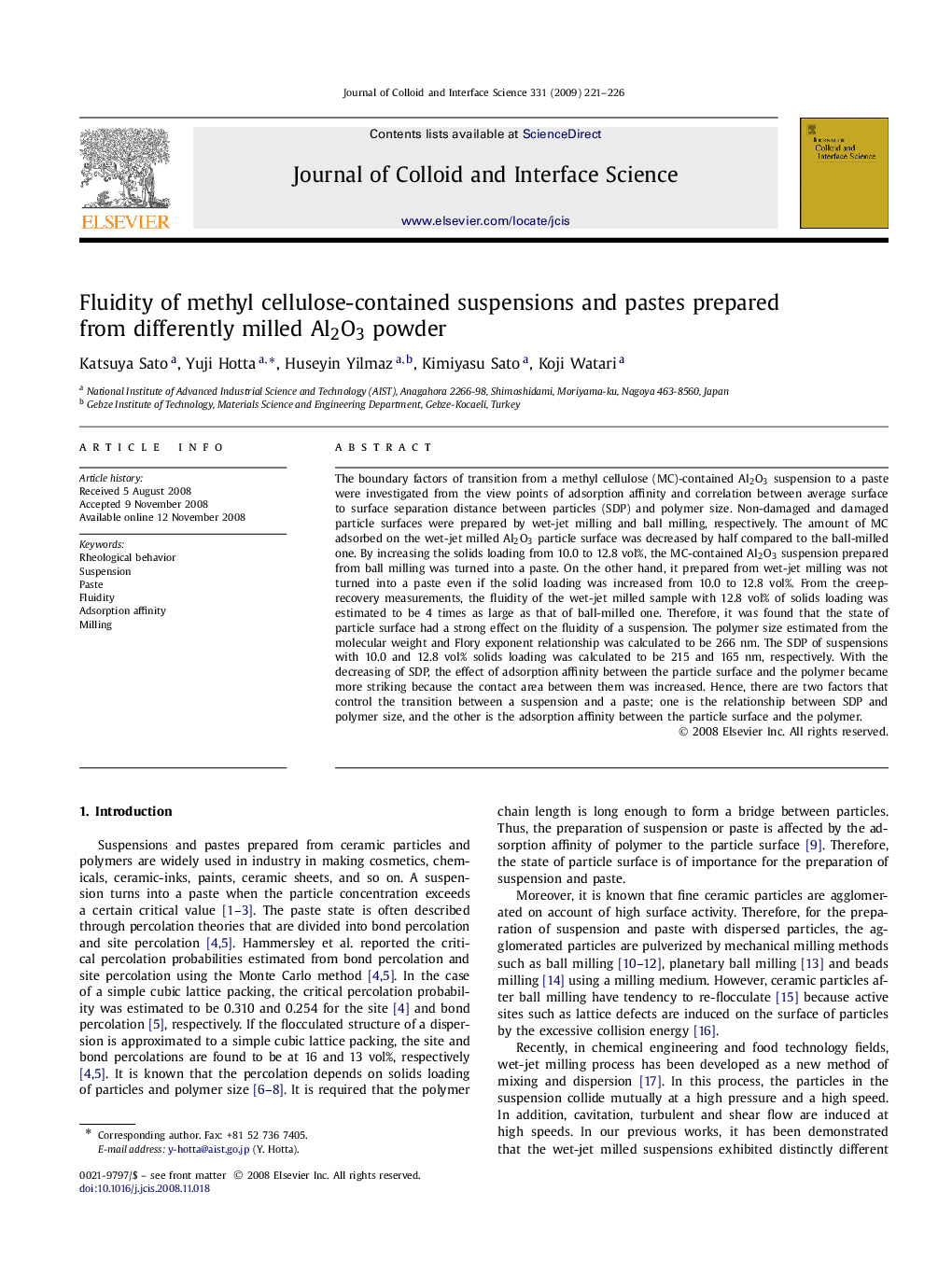| کد مقاله | کد نشریه | سال انتشار | مقاله انگلیسی | نسخه تمام متن |
|---|---|---|---|---|
| 611151 | 880667 | 2009 | 6 صفحه PDF | دانلود رایگان |

The boundary factors of transition from a methyl cellulose (MC)-contained Al2O3 suspension to a paste were investigated from the view points of adsorption affinity and correlation between average surface to surface separation distance between particles (SDP) and polymer size. Non-damaged and damaged particle surfaces were prepared by wet-jet milling and ball milling, respectively. The amount of MC adsorbed on the wet-jet milled Al2O3 particle surface was decreased by half compared to the ball-milled one. By increasing the solids loading from 10.0 to 12.8 vol%, the MC-contained Al2O3 suspension prepared from ball milling was turned into a paste. On the other hand, it prepared from wet-jet milling was not turned into a paste even if the solid loading was increased from 10.0 to 12.8 vol%. From the creep-recovery measurements, the fluidity of the wet-jet milled sample with 12.8 vol% of solids loading was estimated to be 4 times as large as that of ball-milled one. Therefore, it was found that the state of particle surface had a strong effect on the fluidity of a suspension. The polymer size estimated from the molecular weight and Flory exponent relationship was calculated to be 266 nm. The SDP of suspensions with 10.0 and 12.8 vol% solids loading was calculated to be 215 and 165 nm, respectively. With the decreasing of SDP, the effect of adsorption affinity between the particle surface and the polymer became more striking because the contact area between them was increased. Hence, there are two factors that control the transition between a suspension and a paste; one is the relationship between SDP and polymer size, and the other is the adsorption affinity between the particle surface and the polymer.
The adsorption behavior of the polymer on the particle surface is different because the milling methods are affected to the adsorption affinity of polymer to particle surface.Figure optionsDownload as PowerPoint slide
Journal: Journal of Colloid and Interface Science - Volume 331, Issue 1, 1 March 2009, Pages 221–226